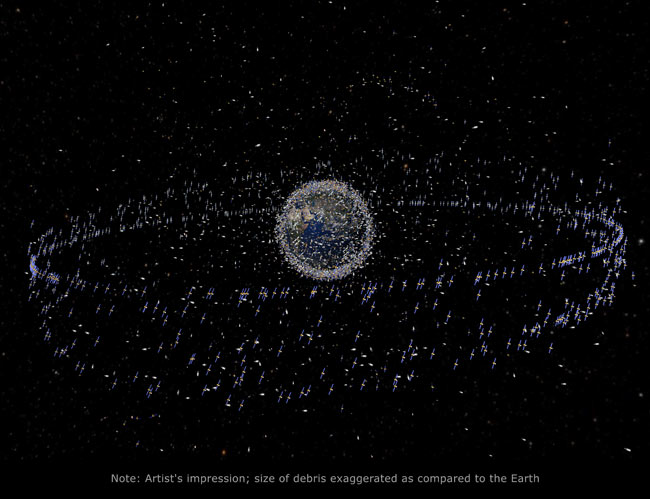Space Junk Rivals Weapons as a Major Threat

What began as a minor trash problem in space has now
Hundreds of thousands of pieces of space junk —
These objects could do serious damage to working spacecraft
The new Space Security 2010 report released by the Space
Such growing awareness of the space debris problem builds on
Consideration of space debris as a major threat may cause
"This is an important realization, because before that
Get the Space.com Newsletter
Breaking space news, the latest updates on rocket launches, skywatching events and more!
All those bits of garbage in space could eventually create a
The space debris swarm
Even fictional space navigator Han Solo might prefer to risk
The possibility of a damaging collision between spacecraft
More than 21,000 objects larger than 4
"The shuttle was more likely to be wiped out by
But the problem has become much worse since Kessler began studying
The Kessler Syndrome
That prediction, known as the Kessler Syndrome, may have
China's intentional destruction of an aging weather
More recently, a U.S. Iridium communications satellite and a
The overall trackable amount of
NASA and other U.S. agencies could use national space policy
"If we only bring down four objects per year, we can
Path to cleaner space
The national space policy shift shows that policymakers have
"This policy basically sets the playing field for what
The United States and other countries could begin discussing
But legally binding agreements remain politically unlikely, Weeden cautioned. More plausible is an agreement on a
Change of tune
The criticism of past space weapons tests that have created
"When the United States tested an anti-satellite (ASAT)
Both countries have since changed their policies, and said
Join our Space Forums to keep talking space on the latest missions, night sky and more! And if you have a news tip, correction or comment, let us know at: community@space.com.
Jeremy Hsu is science writer based in New York City whose work has appeared in Scientific American, Discovery Magazine, Backchannel, Wired.com and IEEE Spectrum, among others. He joined the Space.com and Live Science teams in 2010 as a Senior Writer and is currently the Editor-in-Chief of Indicate Media. Jeremy studied history and sociology of science at the University of Pennsylvania, and earned a master's degree in journalism from the NYU Science, Health and Environmental Reporting Program. You can find Jeremy's latest project on Twitter.









